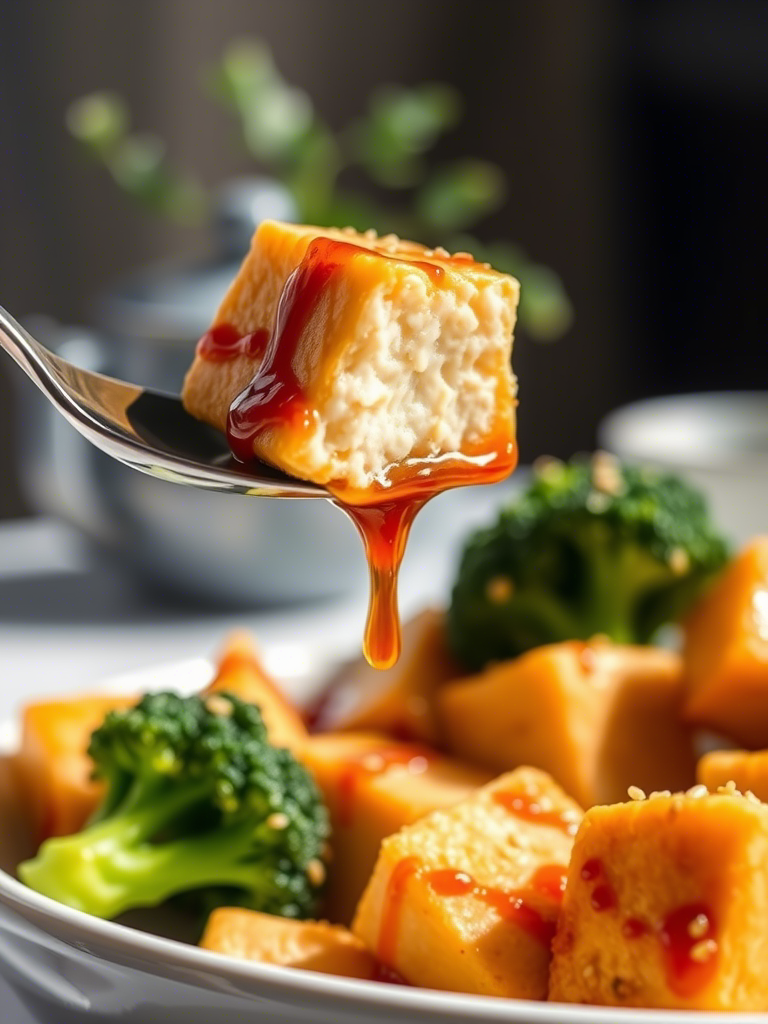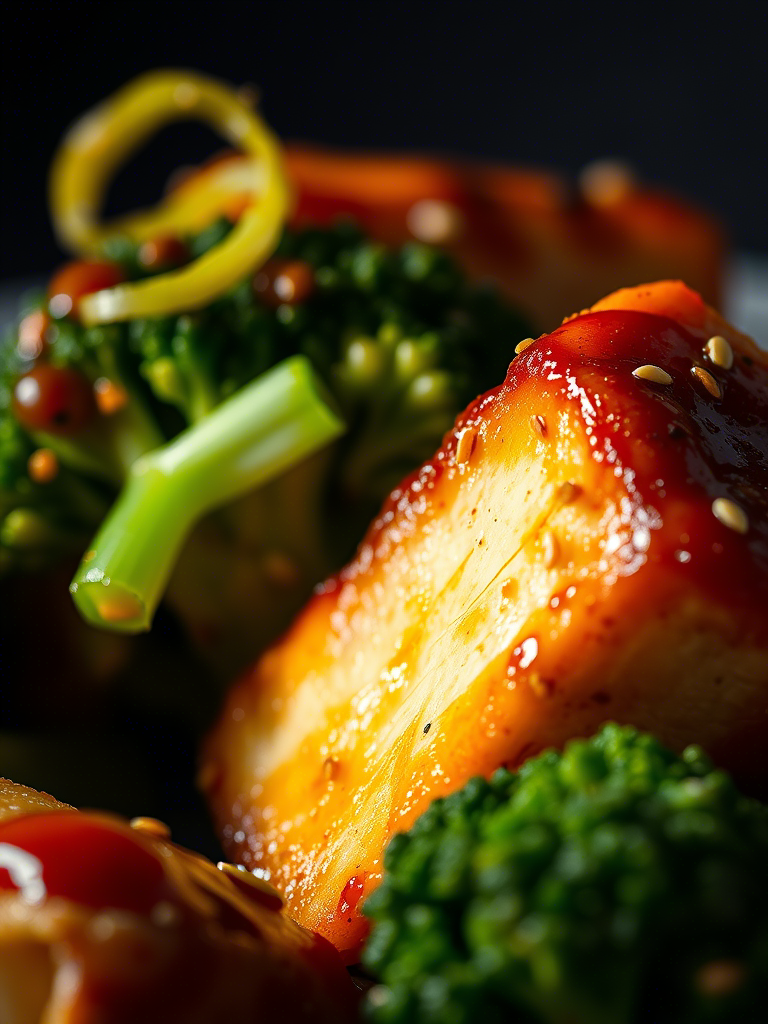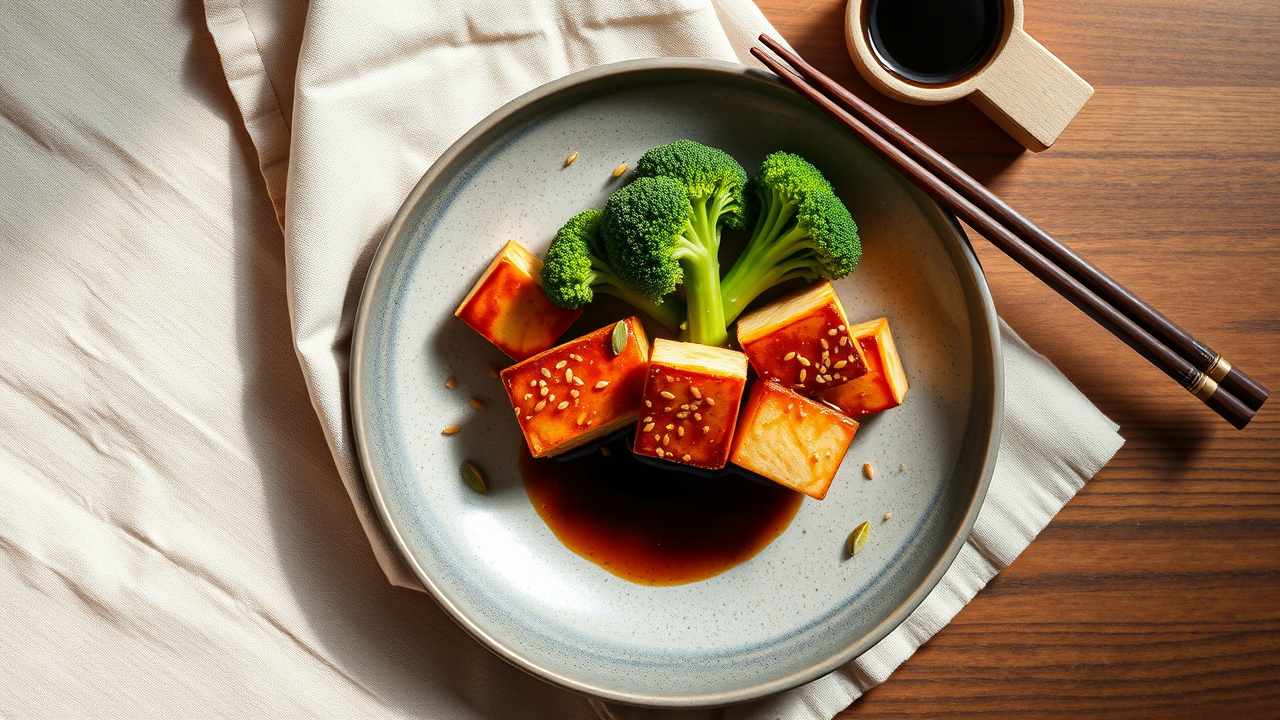If you’ve ever dismissed tofu as bland or broccoli as boring, you’re probably cooking them wrong. Sesame tofu and broccoli isn’t just a plant-based dish—it’s a masterclass in contrast and harmony. This isn’t some flavorless diet food. Done right, it punches above its weight, and honestly, it can compete with anything on a good bistro menu.
This dish has been popping up more frequently in restaurants that don’t even label themselves “vegan-friendly.” And there’s a reason. It’s not about substitution. It’s about reimagining comfort food with texture, umami, and that toasted sesame vibe that wraps around your tongue like a velvet rope.
Let’s break down what makes sesame tofu and broccoli so special, how to master it at a professional level, and what mistakes even good cooks make when trying to nail this seemingly simple plate.
Why This Dish Matters in Modern Kitchens
You’re not just looking at tofu and broccoli tossed in sesame oil. You’re looking at a dish that taps into global flavor consciousness. Asian-inspired? Sure. But also: gluten-free, dairy-free, protein-rich, high in fiber, and absolutely gorgeous on a plate. It plays in wellness circles and fine-dining spaces equally.
According to a 2024 report by Future Market Insights, the global tofu market is projected to hit $39.5 billion by 2032. That’s not just vegans. Chefs are finding tofu to be a neutral canvas that soaks up flavor like it owes you money. And broccoli? Still one of the most nutrient-dense veggies around, with 135% of your daily Vitamin C in just one cup. That’s wild.
Choosing the Right Tofu: Firm, Extra-Firm, or… Don’t Even Bother?
This bit trips people up all the time. For sesame tofu, you want either firm or extra-firm tofu, depending on the desired bite. Silken tofu? That’s for soups, not sautés. Use silken here and you’ll be scraping off tofu pudding from your wok and crying softly into your sesame oil bottle.
Even extra-firm tofu, though, needs prep. You gotta press it. Always. Ten minutes under a weight wrapped in paper towels or better yet, a tofu press. This isn’t just some step to make you feel busy. Pressing tofu is what separates soggy cafeteria tofu from restaurant-level crunch and chew.
A 2023 culinary study from Plant-Based Pro Kitchen found that pressed tofu absorbs marinades 32% better than unpressed tofu. That’s not a small edge. That’s flavor real estate.
Broccoli: Don’t Steam It to Death
Now, broccoli. Let’s say this once: no soggy florets allowed. If your broccoli is dull green and limp like overcooked spaghetti, throw it out and start over.
The key is high-heat roasting or quick pan-blistering. We’re talking caramelized edges, a little char, and crunch that still bites back. Blanching is acceptable—but only if you follow it up with a fast sauté in sesame oil to bring that texture and sheen.
Pro chefs often toss the florets with cornstarch and a splash of soy before roasting. That gives them a slightly crisp outer layer, and when you hit it with sauce later, it clings like it’s meant to.
Let’s Talk Sesame: Not Just Oil, But Layers
People often think, “I’ll just drizzle some sesame oil and call it a day.” That’s lazy. The best sesame tofu and broccoli dishes play with multiple layers of sesame:
- Toasted sesame oil for aroma (never cook it too long—it burns fast).
- White sesame seeds, lightly toasted, for crunch and nuttiness.
- Tahini, for a creamy undertone, if you’re layering a sauce.
- Black sesame, optional but wildly dramatic, especially for garnish on white plates.
One Michelin-starred chef I shadowed last year actually made a black sesame and miso drizzle that was piped under the tofu like edible ink. It was stunning. That’s how far you can go if you’re serious.

The Sauce That Pulls It All Together
Here’s the truth: a sauce is only as good as its balance. Sweet, salty, sour, umami, heat. Your sauce needs all five.
Professional Sauce Breakdown:
- Soy Sauce (or tamari): salty umami base
- Rice vinegar: acidity to brighten up the rich tofu
- Maple syrup or brown sugar: sweetness to contrast the bitterness of broccoli
- Garlic and ginger: aromatic backbone
- Chili paste (optional): a little heat to keep things interesting
- Toasted sesame oil: finish, not fry
Cook it briefly—just until it thickens slightly. Cornstarch slurry helps here. And don’t drown the dish. You want enough to coat and gloss, not stew.
Tofu Cooking Methods: Pan, Air Fryer, Oven?
There’s no single “right” way—but there are definitely wrong ones.
Pan-frying gives the best crust. Cube the tofu, dust lightly with cornstarch and salt, and sear in a neutral oil. Add sesame oil at the end, off-heat, to avoid bitterness.
Air-frying is the pro hack of the moment. It gives crunch with almost no oil, and chefs love it for consistency. 400°F for about 12 minutes, flipping once.
Oven roasting works too—just keep space between the tofu cubes. Overcrowding is tofu murder.
A recent trend among pro kitchens is a “double-cook” method: bake first to dry out, then fry lightly to crisp. It’s extra, yes. But the texture is like a tofu crouton in the best way.
Assembly and Plating: Small Touches, Big Impact
This isn’t a stew. It’s a composed dish. Each element deserves a moment.
Layer tofu and broccoli loosely. Don’t pile. Let steam escape, so nothing gets soggy. Drizzle sauce just before serving. Garnish matters—scallions, sesame seeds, maybe microgreens if you’re fancy.
On white plates, black sesame pops. On darker plates, go heavy with white sesame. Visual contrast is part of taste—don’t ignore it.
I’ve seen chefs sprinkle crushed Sichuan peppercorns over the top for a mild tingle. It’s subtle, but unforgettable.
Common Mistakes (And How to Avoid ‘Em)
- Skipping the tofu press: Always press. No exceptions.
- Using raw broccoli: It won’t soak the sauce right. Roast or char it.
- Overloading sesame oil in cooking: It burns fast. Use it to finish.
- Under-seasoning: Salt tofu and broccoli separately before saucing.
- Dousing everything in sauce: Think glaze, not soup.
Scaling This Dish for Restaurants
In commercial kitchens, consistency is king. Batch pressing tofu in advance, par-roasting broccoli, and pre-making sauce are essential.
To keep that “fresh” look, pro kitchens often reheat broccoli in a wok for 30 seconds with sesame oil just before plating. It refreshes the color and adds a just-cooked aroma. Smart move.
As a menu item, sesame tofu and broccoli scores high on profit margins, prep efficiency, and cross-diet appeal. Add rice, and it’s a bowl. Add noodles, and it’s fusion. Plate small, and it’s fine dining. Versatile is an understatement.
Emerging Trends in Plant-Based Flavor
Chefs are now using fermented black garlic in the sauce for deep umami. Others are experimenting with smoked sesame oil—just a few drops change everything.
Expect to see versions of this dish with charred lemon, ponzu reduction, or even gochujang caramel. Korean, Thai, and Japanese elements are increasingly blending in, turning this dish from a side to a centerpiece.

Is It Healthy?
Very. And not in that fake “health halo” kind of way.
- Tofu: high in plant protein, low in saturated fat, full of iron and calcium.
- Broccoli: fiber, vitamin C, antioxidants.
- Sauce: low in saturated fats, customizable sodium.
Just watch the sodium in the soy sauce—use low-sodium if you’re batch cooking for wellness-forward clients.
Final Thoughts: How to Elevate the Ordinary
Sesame tofu and broccoli isn’t just a weeknight meal. It can be a feature dish with the right treatment. You just need technique, attention, and a little flair. Use real textures. Layer your flavors. Toast your sesame. Press your tofu.
And whatever you do, never treat this dish like an afterthought. When done right, it’s the kind of plant-based plate that makes even the most die-hard carnivore take a quiet second bite and say, “Damn, that’s good.”
If you’re a professional chef or home cook looking to elevate plant-based dishes, this one’s your proving ground. Nail it, and you’re not just cooking tofu and broccoli. You’re creating crave.
Now get that pan hot. Your tofu deserves better.
FAQs
What type of tofu is best for sesame tofu and broccoli?
Use firm or extra-firm tofu—never silken—for the best texture and flavor absorption.
Do I really need to press the tofu?
Yes, pressing removes excess moisture and helps the tofu crisp up beautifully.
Can I use frozen broccoli for this dish?
Yes, but fresh broccoli gives better texture and roasts more evenly.
Is sesame oil safe to cook with at high heat?
Not really—use it to finish the dish, not for frying, to avoid bitterness.
What’s the best way to get crispy tofu?
Dust tofu with cornstarch and pan-fry or air-fry it at high heat until golden.
Can this dish be made gluten-free?
Absolutely—just use tamari or gluten-free soy sauce.
How do I keep the broccoli from getting soggy?
Roast or sauté it quickly at high heat for charred edges and tender crunch.
What’s the secret to a great sesame sauce?
Balance—sweet, salty, sour, umami, and a hint of heat work together perfectly.
Can I meal-prep this dish ahead of time?
Yes, but store sauce separately and reheat tofu in an air fryer or oven.
Is sesame tofu and broccoli healthy?
Yes—it’s packed with plant protein, fiber, vitamins, and healthy fats.
What garnishes elevate the final dish?
Toasted sesame seeds, scallions, or microgreens add crunch and color.
Can I scale this for a restaurant menu?
Definitely—it’s versatile, profitable, and easy to batch prep.
What’s a trendy twist on the classic sauce?
Try adding black garlic or smoked sesame oil for deeper, bolder flavor.
What’s the biggest mistake people make with this recipe?
Over-saucing everything—keep it light and glossy, not drowning.

Mariana is a passionate home cook who creates delicious, easy-to-follow recipes for busy people. From energizing breakfasts to satisfying dinners and indulgent desserts, her dishes are designed to fuel both your body and hustle.
When she’s not in the kitchen, she’s exploring new flavors and dreaming up her next recipe to share with the Foodie Hustle community.

